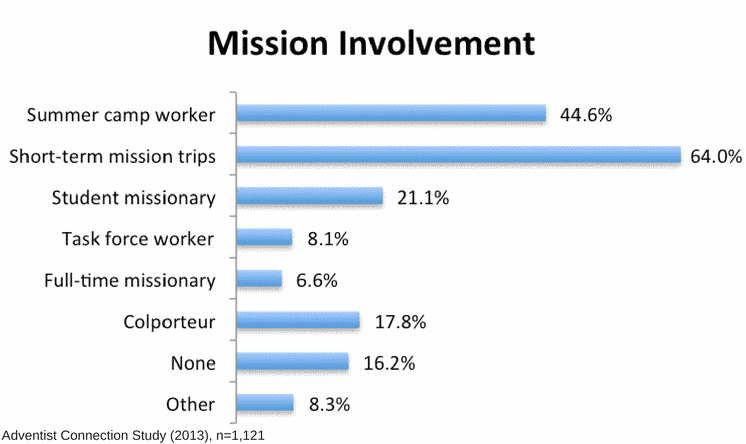With summer’s end comes the start of a new academic year for young people. As they start school, many may disconnect from their local churches because of busyness, or alternatively, they may find reasons to further engage in a local congregation.
When you think back to your time as a young person in the Adventist Church, what is your favorite memory? Is it time you spent studying the Bible in Sabbath School or in a small group? Is it a life-changing mission trip you took? Or perhaps serving your church in a leadership position comes to mind. It’s likely that, whatever experiences you think of, they helped shape your relationship not only with the Church but with Christ as well.
As discussed in previous blogs (click here), many would say that young people within the Adventist Church are uninvolved. However, a 2012-13 study commissioned by the General Conference of Seventh-day Adventists depicted a more nuanced picture. A team of researchers from Oakwood and Southern Adventist Universities was led by Dr. Douglas Jacobs of Southern, and surveyed more than one thousand recent graduates (the classes of 2000-2012) from both universities and from Pacific Union College. A majority of participants (59%) were under 30 years of age and about one-third (32%) between ages 30-34. More than half (54%) were married.
When asked about their involvement with different types of mission work, most respondents indicated that they were involved in some sort of ministry or mission work in the past.
- Just under two-thirds (64%) of respondents indicated that they had gone on a short-term mission trip.
- Nearly half (44.6%) stated that they had been a summer camp worker.
- Almost a fourth (21.1%) reported that they had been student missionaries, and 6.6% stated that they had been full-time missionaries.
Interestingly, less than one-sixth of respondents (16.2%) shared that they had not been involved in any mission work.

The sample was also asked about their participation in service to the church or community during college – specifically those that were outside of class requirements.
- Over one in four (28.2%) of respondents indicated that they volunteered “often” or “very often” in their community, while nearly a third (31.6%) admitted that they “rarely” or “never” did so.
- Over one-fourth stated that they “often” or “very often” participated in small groups, while nearly half (43.3%) revealed that they “rarely” or “never” were involved in groups.
- Additionally, 27.2% reported that they attended Sabbath School “often” or “very often,” while over half (52.2%) disclosed that the “rarely” or “never” attended.
While a decent percentage of young people are actively involved in their churches, as you can see there is definitely room for growth, demonstrated by the percentage of young people who admit to “rarely” or “never” being involved.

While many survey respondents indicated that they were involved actively in giving to their church, there were many aspects of church life that this sample were not involved in. For example, 45% of survey respondents had “never” been on a church-sponsored mission trip, 39.2% indicated that they had “never” held a position in the church, and 38.7% reported that they had “never” been involved with their church’s music ministry. This data exhibits that there is significant room for growth in gaining the involvement of young people in their local congregations.

As you can see, while recent graduates of Adventist universities in the U.S. are plugging into some areas of church life (or have previously), there is still much room for growth. Consider the young people in your church. In what areas do you feel they are being utilized to their full potential? What areas could be better developed to engage them further?
Young people are the future of the Adventist Church. It is imperative that they are trained and mentored so that, when the time comes for them to lead, they are prepared. A strong church today ensures a strong church tomorrow!
More information about this research, its updated report, and its Executive Summary can be found here.
Created in collaboration with the Institute of Church Ministry.
Published by ASTR

